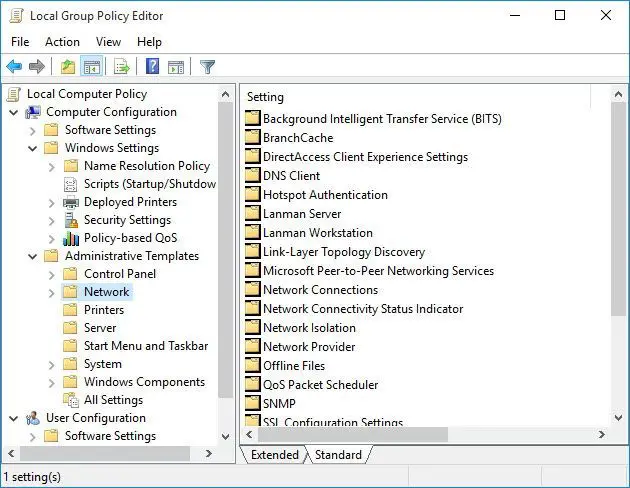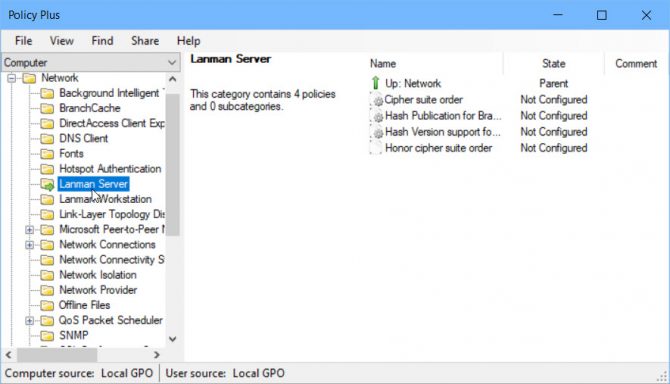How to Open Group Policy Editor as Admin
Group policy is a way to configure computer and user settings for a local computer or a network joined computer (using Active Directory). It can be used to configure almost all aspects of the Operating System including software and Windows Settings, network and security policies etc. Group Policy Editor (gpedit.msc) is a configuration manager for Windows which makes it easier to configure group policies.
Most local group policies require changes in Windows Registry.Instead of going through Windows Registry, the user can configure different aspects of the Windows Operating System through a group policy editor.
Update: Now you can also add gpedit.msc to Windows 11 Home. The updated method also works for Windows 10 Home.
One of the very main differences between Windows 10 Pro and Windows 10 Home editions is the network management capabilities. Other differences include the exclusion of Remote Desktop and Group Policy Editor for Windows 10 Home Edition. In fact, the Group Policy Editor is not available to any Windows Home users, be it Windows XP, Windows 7, Windows 8.1 or Windows 10.
If the group policy editor is missing from your version of Windows 10 or if you are getting an error on gpedit.msc not found, you should check out which Windows 10 edition you're using.

This is a serious drawback as we need the group policies even for managing the settings of local computer. The local group policy is better than changing the settings through Windows Registry which is much riskier. While most group policy settings can revert easily, Registry editing can have adverse effects on the system.
In this article, we will guide you to install the Group Policy Editor for Windows 10 Home edition. This method can be used in Windows 7 and Windows 8 too.
Download and Install GPEdit.msc in Windows 10 Home using PowerShell script
- Download the GPEdit Enabler script from the link below
GPEdit Enabler for Windows 10 Home Edition (393 bytes, 257,182 hits)
This is a simple PowerShell script that will install the disabled Group Policy feature in the Windows 10 Home edition. - Right-click the downloaded gpedit-enabler.bat file and select Run as Administrator.
- This will start the installation process. It may take some time depending upon your system performance. Once the process is complete, press any key to close the command prompt window.

- Although a restart is not required, if the policies are not working, you should restart the computer once.
How to open the group policy editor after installing
After you install the group policy editor, you should be to access local group policies and edit group policies already implemented on your computer.
Open the Run dialog by pressing the Windows key + R. Type gpedit.msc and press the Enter key or OK button. This should open gpedit in Windows 10 Home.
Some people complain that although this method enabled the group policy editor, most of the settings don't work in the Home edition. If both the methods fail in your case, you should probably try out the third method discussed below.
Enable Group Policy Editor in Windows 10 Home using GPEdit Installer
Since the Group Policy Editor is not included in Windows 10 by default, we will need to download the editor first. You may download it from the below-mentioned download link.
Download GPEdit.msc Installer (854.7 KiB, 206,003 hits)
Alternative download link
This is a simple setup file which when run will install and configure the Group Policy Editor in your Windows Home system.
Installing gpedit.msc correctly
If you have a 32-bit Windows (x86) then the setup should be installed smoothly without any problems, and you should be able to access the Group Policy Editor through the Microsoft Management Console by going to Run –> gpedit.msc. However, if you have Windows 64-bit (x64) then you will need some extra steps after running the installer. Follow the steps below after running the installer:
- Go to C:\Windows\SysWOW64 folder
- Copy the following folders and files from C:\Windows\SysWOW64 to C:\Windows\System32
"GroupPolicy", "GroupPolicyUsers" and gpedit.msc.
This will ensure you run the editor from the Run dialog.
Solving common problems with running gpedit.msc
If you are getting an "MMC cannot create a snap-in" error message while starting gpedit.msc, you may follow the steps below for a solution:
- Go to C:\Windows\Temp\gpedit\ folder and make sure it exists.
- Download the following zip file and unzip it to C:\Windows\Temp\gpedit\. This should replace two files x86.bat and x64.bat.
gpedit-temp-files-x86x64 (1.3 KiB, 69,332 hits)
- Now run x86.bat if you are running 32-bit Operating System and x64.bat if you are running 64-bit Windows 10. Make sure you are running the batch files as Administrator.
After following the above-mentioned steps, you should have a working Group Policy Editor in Windows 10 Home edition. In case of any confusion or problem, you are always encouraged to discuss by commenting below.
Download Group Policy Editor for Windows 10 – Policy Plus
Policy Plus is a third-party app and an alternative to the built-in Group Policy editor. Its interface is very similar to GPEdit. One major benefit of using Policy Plus is that it comes with a search function where you can search for your required policies.
- Download Policy Plus from the below-given link:
Policy Plus (10.3 KiB, 37,591 hits)
- Run Policy-Plus.exe. It is a portable app so it will open immediately. You can make changes to the policies exactly how you do it in the Windows built-in group policy editor.

Hopefully, these methods will help you enable gpedit.msc in your system.
One thing to note here is that these methods are useful when you want to use local group policy editor. If you are a domain administrator and want to configure group policies on a Windows 10 Home computer using Windows Server Active Directory, this method will not be effective as Windows 10 Home does not support joining a domain in Active Directory.
I have enabled gpedit on my Windows Home but some group policies are not working?
Unfortunately, there are a lot of limitations on the Windows 10 Home edition. Although you will be able to install the Group Policy editor in the Home edition, many group policy options will not work because of other dependencies. If you want to have a completely functional Group Policy editor, you will need to upgrade from Windows 10 Home to Pro.
Upgrading is easy on Windows 10. To upgrade to Windows 10 Pro, go to Settings –> Update & Security –> Activation. Select Change product key and then enter the 25-character Windows 10 Pro product key. You can purchase a new product key from Microsoft.
How do I see if a specific group policy is applied?
To check the currently applied Registry settings, rsop.msc management console(Resultant Set of Policy is used. However, since this is a tool that requires Microsoft Management Console, it is not available in Windows 10 Home. You will need to check the applied Registry settings.
To open the rsop tool, go to Run –> rsop.msc. The Resultant set of Policy tool will automatically start scanning the system for applied Group Policies.
Does group policy override Windows Registry?
Most local group policies are applied using Windows Registry. Group policies override Windows Registry only when group policies are applied using Active Directory. If a user changes the Registry after the AD policies are applied, the changes are automatically reversed upon the next group policy update.
The group policies are applied in the following order:
- local group policy
- site
- domain
- organizational units (OU)
You can also enable other functionalities in Windows 10 Home:
- How to Enable Local User and Group Management (lusrmgr.msc) Console in Windows 10 Home
- How To Enable Hyper-V On Windows 10 Home
- How To Enable Remote Desktop In Windows 10 Home (RDP)
- How to enable secpol.msc in Windows 10 Home
You can also follow our gpedit.msc tag to explore more about using the group policy editor for different tasks.
Your experience and comments are highly appreciated.
Also see:
How to Open Group Policy Editor as Admin
Source: https://www.itechtics.com/enable-gpedit-windows-10-home/
0 Response to "How to Open Group Policy Editor as Admin"
Post a Comment